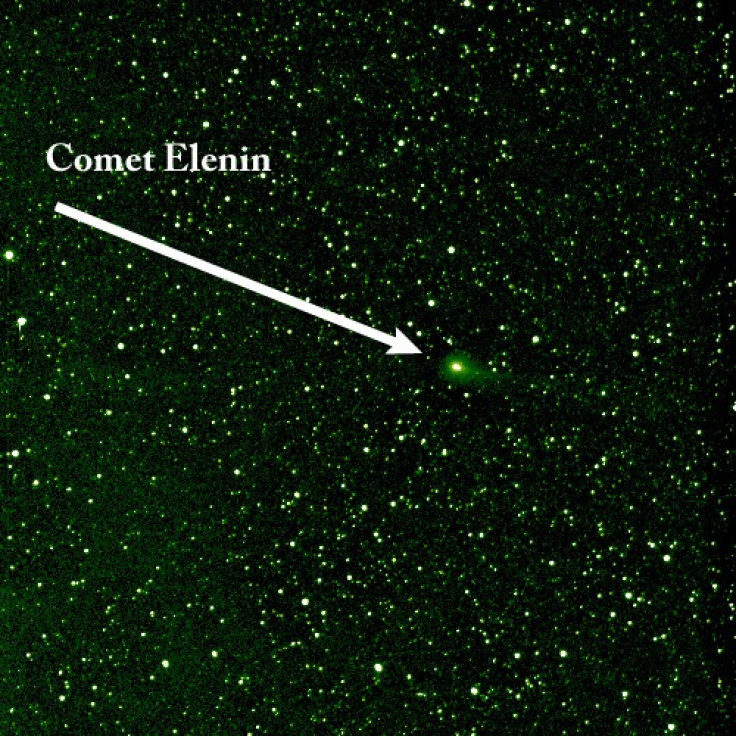NASA Says Comet Elenin Will Not Collide With Earth

NASA is discounting rampant Internet rumors that comet Elenin will strike Earth or disrupt its gravitational pull in October.
The space agency said the 3-to-5-kilometer-wide comet is too small to do have much effect and in any case its closest approach will bring it 90 times the distance to the moon.
NASA held a Q&A session headed by Don Yeomans of the Near-Earth Object Program Office at the Jet Propulsion Laboratory in Pasadena, Calif., and David Morrison of the NASA Astrobiology Institute at the Ames Research Center in Moffett Field, Calif., in order to allay any fears of the worst-case scenarios.
The scientists said that any approximate alignments of comet Elenin with other celestial bodies are meaningless, and the comet will not encounter any dark bodies that could perturb its orbit, nor will it influence us in any way here on Earth.
"Comet Elenin will not only be far away, it is also on the small side for comets. And comets are not the most densely packed objects out there. They usually have the density of something akin to loosely packed icy dirt,” said Yeomans.
"So you've got a modest-sized icy dirtball that is getting no closer than 35 million kilometers," he added. "It will have an immeasurably minuscule influence on our planet. By comparison, my subcompact automobile exerts a greater influence on the ocean's tides than comet Elenin ever will."
"A comet is nothing like a brown dwarf. You are correct that the way astronomers measure the mass of one object is by its gravitational effect on another, but comets are far too small to have a measurable influence on anything," Morrison said in a NASA press release.
"The truth is that Elenin has received much more attention than it deserves due to a variety of Internet postings that are untrue," scientists concluded.
The comet was first detected last Dec. 10 by Leonid Elenin, an observer in Lyubertsy, Russia, who made the discovery "remotely" using an observatory in New Mexico. At that time, Elenin was about 401 million miles from Earth. Since its discovery, Elenin has closed the distance to Earth's vicinity as it makes its way closer to perihelion, its closest point to the Sun.
© Copyright IBTimes 2024. All rights reserved.











